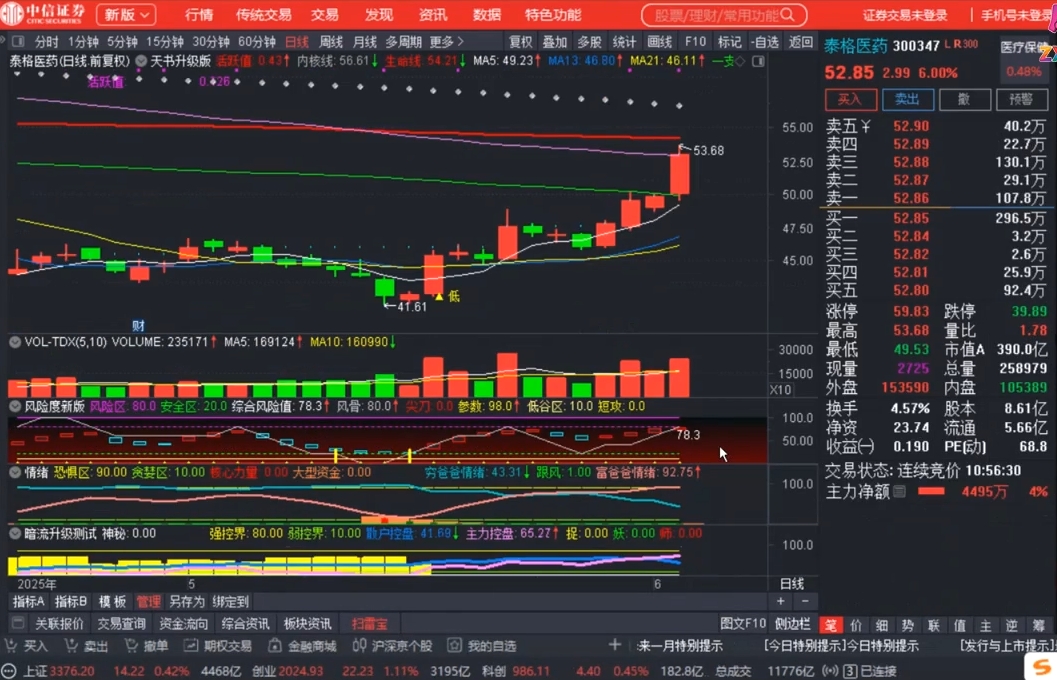实现JavaScript元素弹性动画的关键在于使用requestanimationframe结合弹性运动公式,主要包括5种常用方法:1. 阻尼振动公式,通过刚度和阻尼系数模拟弹簧震荡;2. 基于时间的缓动函数(如easeoutelastic),提供类似弹性的过渡效果;3. 弹簧物理模型,引入质量参数更真实地模拟弹簧运动;4. 过阻尼弹簧,通过增大阻尼避免震荡;5. 临界阻尼弹簧,通过计算最优阻尼值使物体快速平稳到达目标位置。选择合适的公式取决于所需效果,调整stiffness、damping、mass等参数可控制动画特性,优化方面包括减少dom操作、合理设置停止条件、使用硬件加速,应用场景涵盖下拉刷新、按钮反馈、滚动反弹、拖拽回位等交互设计。

实现JavaScript元素的弹性动画,关键在于理解和应用弹性运动的公式。简单来说,就是模拟弹簧的运动规律,让元素在目标位置附近来回震荡,最终稳定下来。

解决方案
实现弹性动画的核心是使用JavaScript的requestAnimationFrame来创建动画循环,并根据弹性运动公式来更新元素的位置。下面提供5种常用的弹性运动公式,并附带代码示例,让你的交互更生动。

阻尼振动公式(Damped Harmonic Motion)
这是最常用的弹性动画公式,模拟物体在阻力作用下的振动。

-
公式:acceleration = -stiffness * displacement – damping * velocityvelocity += accelerationposition += velocity
- stiffness:刚度系数,影响弹簧的弹性。
- displacement:位移,当前位置与目标位置的差值。
- damping:阻尼系数,影响阻力的大小。
- velocity:速度。
- acceleration:加速度。
- position:当前位置。
-
代码示例:
function animate(element, target, stiffness, damping) { let position = parseFloat(element.style.left) || 0; let velocity = 0; function update() { const displacement = target - position; const acceleration = -stiffness * displacement - damping * velocity; velocity += acceleration; position += velocity; element.style.left = position + 'px'; if (math.abs(displacement) > 0.1 || Math.abs(velocity) > 0.1) { // 停止条件 requestAnimationFrame(update); } else { element.style.left = target + 'px'; // 最终位置 } } requestAnimationFrame(update); } const element = document.getElementById('myElement'); const targetPosition = 300; // 目标位置 const stiffness = 0.08; // 刚度 const damping = 0.2; // 阻尼 animate(element, targetPosition, stiffness, damping);
基于时间的缓动函数 (Easing Functions)
虽然不是严格意义上的弹性公式,但某些缓动函数可以模拟弹性效果,例如easeOutElastic。
- 公式: (这里使用一个常见的easeOutElastic实现)
function easeOutElastic(x) { const c4 = (2 * Math.PI) / 3; return x === 0 ? 0 : x === 1 ? 1 : Math.pow(2, -10 * x) * Math.sin((x * 10 - 0.75) * c4) + 1; }
- 代码示例:
function animateEaseOutElastic(element, target, duration) { const start = parseFloat(element.style.left) || 0; const startTime = performance.now(); function update(currentTime) { const timeElapsed = currentTime - startTime; let progress = timeElapsed / duration; if (progress > 1) progress = 1; const easedProgress = easeOutElastic(progress); const position = start + (target - start) * easedProgress; element.style.left = position + 'px'; if (progress < 1) { requestAnimationFrame(update); } else { element.style.left = target + 'px'; } } requestAnimationFrame(update); } const element = document.getElementById('myElement'); const targetPosition = 300; const duration = 1000; // 动画时长,毫秒 animateEaseOutElastic(element, targetPosition, duration);
spring Physics (弹簧物理模型)
更接近真实的弹簧模型,考虑了质量(mass)的影响。
-
公式:
force = -stiffness * displacementacceleration = force / mass – damping * velocityvelocity += acceleration * deltaTimeposition += velocity * deltaTime
- mass:质量,影响惯性。
- deltaTime:时间间隔,通常是1/60秒。
-
代码示例:
function animateSpring(element, target, stiffness, damping, mass) { let position = parseFloat(element.style.left) || 0; let velocity = 0; const deltaTime = 1 / 60; // 假设帧率为60fps function update() { const displacement = target - position; const force = -stiffness * displacement; const acceleration = force / mass - damping * velocity; velocity += acceleration * deltaTime; position += velocity * deltaTime; element.style.left = position + 'px'; if (Math.abs(displacement) > 0.1 || Math.abs(velocity) > 0.1) { requestAnimationFrame(update); } else { element.style.left = target + 'px'; } } requestAnimationFrame(update); } const element = document.getElementById('myElement'); const targetPosition = 300; const stiffness = 80; const damping = 10; const mass = 1; animateSpring(element, targetPosition, stiffness, damping, mass);
Overdamped Spring (过阻尼弹簧)
当阻尼足够大时,物体不会振荡,而是直接回到目标位置。
-
公式: 与Spring Physics相同,但damping值较大。
-
代码示例: (与Spring Physics代码相同,但增加阻尼)
// 使用与Spring Physics相同的animateSpring函数,但修改阻尼值 const element = document.getElementById('myElement'); const targetPosition = 300; const stiffness = 80; const damping = 30; // 增加阻尼 const mass = 1; animateSpring(element, targetPosition, stiffness, damping, mass);
Critically Damped Spring (临界阻尼弹簧)
阻尼刚好能阻止振荡,使物体以最快速度回到目标位置。 寻找合适的阻尼值比较麻烦,通常需要根据stiffness和mass进行计算,使得阻尼系数满足临界阻尼的条件。
-
公式:
damping = 2 * Math.sqrt(stiffness * mass) (计算临界阻尼) 其他公式与Spring Physics相同。
-
代码示例:
function animateCriticalDampedSpring(element, target, stiffness, mass) { let position = parseFloat(element.style.left) || 0; let velocity = 0; const deltaTime = 1 / 60; const damping = 2 * Math.sqrt(stiffness * mass); // 临界阻尼计算 function update() { const displacement = target - position; const force = -stiffness * displacement; const acceleration = force / mass - damping * velocity; velocity += acceleration * deltaTime; position += velocity * deltaTime; element.style.left = position + 'px'; if (Math.abs(displacement) > 0.1 || Math.abs(velocity) > 0.1) { requestAnimationFrame(update); } else { element.style.left = target + 'px'; } } requestAnimationFrame(update); } const element = document.getElementById('myElement'); const targetPosition = 300; const stiffness = 80; const mass = 1; animateCriticalDampedSpring(element, targetPosition, stiffness, mass);
如何选择合适的弹性公式?
选择哪种公式取决于你想要的效果。阻尼振动和Spring Physics更适合需要弹性震荡效果的场景,而过阻尼和临界阻尼则适合快速平滑过渡到目标位置的场景。 基于时间的缓动函数则提供了更简单的控制方式。
如何调整弹性动画的参数?
- stiffness (刚度):值越大,弹性越强,震荡频率越高。
- damping (阻尼):值越大,阻力越大,震荡幅度越小,收敛速度越快。
- mass (质量):值越大,惯性越大,震荡幅度越大,收敛速度越慢。
- duration (持续时间):仅在使用基于时间的缓动函数时有效,值越大,动画持续时间越长。
如何优化弹性动画的性能?
- 避免频繁的DOM操作: 尽量减少element.style.left = position + ‘px’的调用次数。
- 使用requestAnimationFrame: 这是浏览器提供的优化API,能确保动画流畅运行。
- 合理设置停止条件: 当元素足够接近目标位置时,停止动画,避免不必要的计算。 可以通过判断Math.abs(displacement) > 0.1 || Math.abs(velocity) > 0.1这样的条件来停止动画。
- 使用硬件加速: 通过css的transform: translate3d(x, y, z)来触发硬件加速,提高动画性能。
弹性动画在实际项目中的应用场景
弹性动画可以用于各种交互场景,例如:
- 下拉刷新: 模拟下拉时的弹性效果。
- 按钮点击反馈: 点击按钮时,按钮产生一个轻微的弹性回弹效果。
- 页面滚动: 滚动到页面边缘时,产生一个弹性反弹效果。
- 元素拖拽: 拖拽元素时,释放后产生一个弹性回位效果。
通过灵活运用这些公式和技巧,你可以为你的网页和应用添加更生动、自然的交互体验。



















